Shower Plants That Actually Thrive in Humidity:
Bringing nature into your bathroom can transform it into a lush, spa-like retreat. Shower Plants That Actually Thrive in Humidity not only enhance the aesthetic appeal of your space but also provide numerous benefits. These plants thrive in the warm, moist conditions of a bathroom, helping to purify the air, reduce stress, and add a refreshing touch of greenery.
However, not all plants can withstand the constant humidity and limited sunlight typical of a bathroom. Choosing the right varieties ensures they flourish with minimal maintenance. In this guide, we’ll explore the best Shower Plants That Actually Thrive in Humidity and how to care for them, so you can enjoy a vibrant and healthy indoor oasis.
Benefits of Shower Plants That Actually Thrive in Humidity:
Adding Shower Plants That Actually Thrive in Humidity to your bathroom offers more than just visual appeal. These plants thrive in the warm, steamy environment, providing multiple benefits that enhance both your home and well-being.
1. Natural Air Purification
Many Shower Plants That Actually Thrive in Humidity help filter out toxins, improve air quality, and remove pollutants such as formaldehyde, benzene, and carbon monoxide. Their natural ability to cleanse the air makes your bathroom a fresher and healthier space.
2. Increased Oxygen Levels
Humidity-loving plants absorb carbon dioxide and release oxygen, improving air circulation and enhancing indoor air quality. This boost in oxygen can contribute to a more refreshing and revitalizing atmosphere in your shower space.
3. Low Maintenance Due to Consistent Moisture
Unlike other houseplants that require frequent watering, Shower Plants That Actually Thrive in Humidity benefit from the naturally moist conditions of a bathroom. The constant humidity reduces the need for frequent watering, making them easier to care for.
4. Aesthetic Appeal and Spa-Like Atmosphere
Lush, green foliage transforms an ordinary bathroom into a calming, tropical retreat. The presence of Shower Plants That Actually Thrive in Humidity creates a peaceful and rejuvenating space, perfect for unwinding after a long day.
1. Boston Fern (Nephrolepis exaltata)
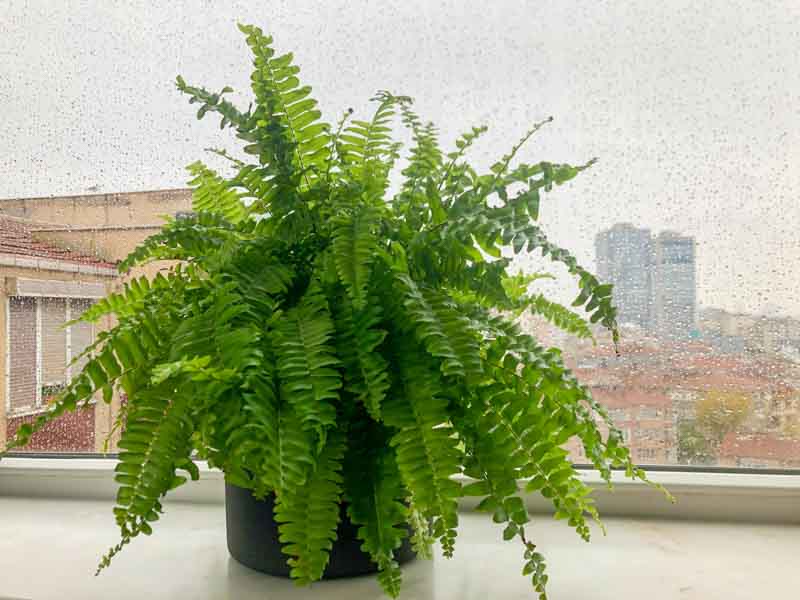
The Boston Fern is one of the best Shower Plants That Actually Thrive in Humidity, thanks to its love for warm, moist environments. Its delicate, feathery fronds bring a lush, tropical feel to any bathroom while also improving air quality.
Why Boston Fern Thrives in the Shower?
- Loves high humidity – The steam from showers mimics its natural rainforest habitat.
- Prefers indirect light – Ideal for bathrooms with filtered or low light conditions.
- Requires regular moisture – Benefits from the naturally humid environment but still needs occasional misting to prevent drying out.
Care Tips for Boston Fern in the Shower:
- Place it in a hanging basket or wall-mounted planter to showcase its cascading fronds.
- Keep the soil consistently moist but avoid waterlogging.
- Mist occasionally if humidity levels drop.
- Provide good airflow to prevent mold or mildew growth on the leaves.
2. Staghorn Fern (Platycerium bifurcatum)
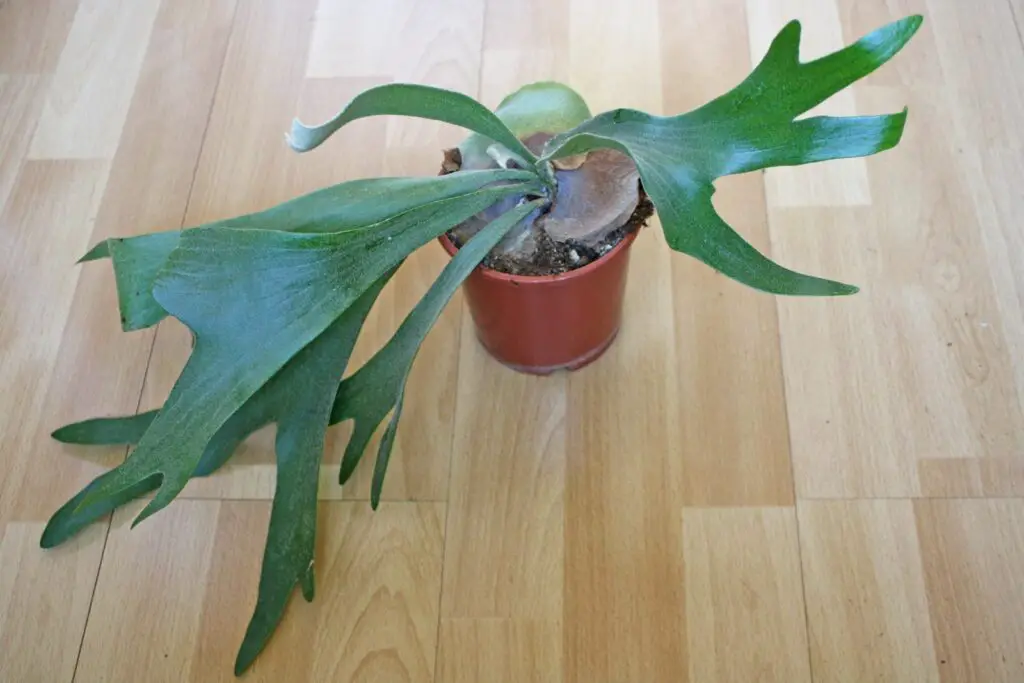
The Staghorn Fern is a striking and unique addition to any bathroom, making it one of the best Shower Plants That Actually Thrive in Humidity. As an epiphytic plant, it naturally grows on trees rather than in soil, making it perfect for mounting on wood or hanging in a humid shower environment.
Why Staghorn Fern Thrives in the Shower?
- Naturally epiphytic – Absorbs moisture and nutrients from the air, making bathroom humidity ideal.
- Loves humid environments – The steam from showers helps keep its fronds hydrated.
- No soil required – Can be mounted on wood or placed in a breathable basket.
Care Tips for Staghorn Fern in the Shower:
- Mount it on a wooden plaque or board for a natural, vertical display.
- Mist it regularly, especially if the humidity drops.
- Provide indirect light—bright, filtered light is ideal.
- Avoid overwatering; soak the root ball occasionally instead of drenching it daily.
3. Maidenhair Fern (Adiantum spp.)
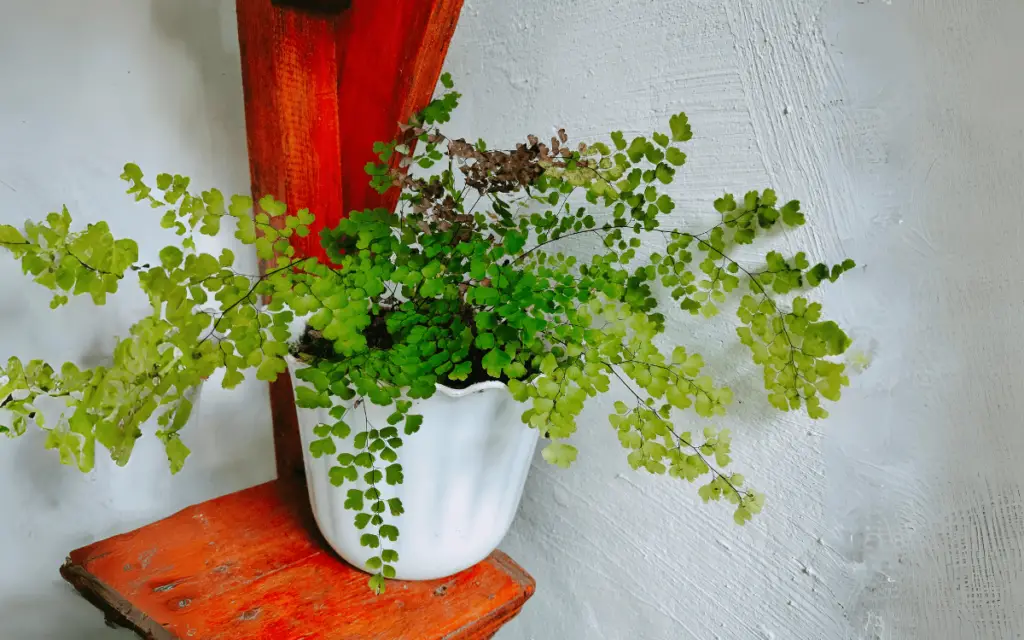
The Maidenhair Fern is a stunning, delicate plant that flourishes in warm, humid environments, making it a perfect choice for Shower Plants That Actually Thrive in Humidity. Its soft, lacy fronds create a lush, elegant look, bringing a touch of nature’s beauty into your bathroom.
Why Maidenhair Fern Thrives in the Shower?
- Requires high humidity – The moisture from showers helps keep its delicate fronds from drying out.
- Prefers indirect light – Grows best in bright, filtered light but can tolerate lower light levels.
- Visually appealing – Its soft, cascading foliage adds an elegant and calming touch to any space.
Care Tips for Maidenhair Fern in the Shower:
- Keep the soil consistently moist but avoid overwatering.
- Provide bright, indirect light—avoid direct sun exposure.
- Mist occasionally if the humidity drops below 50-60%.
- Place it on a shelf, hanging planter, or windowsill where it can enjoy the humid air.
4. Bromeliads (Bromeliaceae spp.)
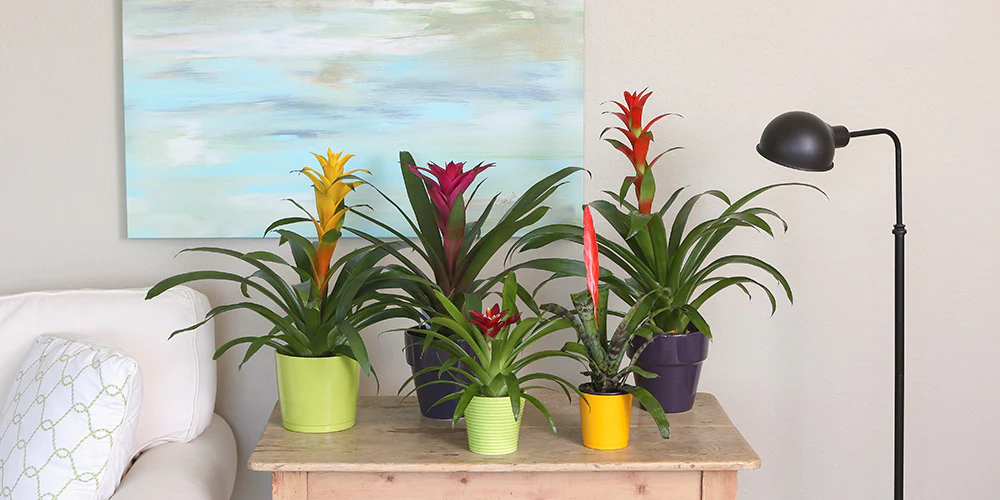
Bromeliads are tropical beauties that bring a bold pop of color and an exotic touch to your bathroom. As one of the best Shower Plants That Actually Thrive in Humidity, they are naturally adapted to warm, moist conditions, making them an excellent choice for steamy spaces.
Why Bromeliads Thrive in the Shower?
- Adapted to high humidity – Naturally found in rainforests, they thrive in humid environments like showers.
- Tolerant of warm temperatures – Prefers warmth, making bathroom conditions ideal.
- Stores water in its central cup – Absorbs moisture and nutrients efficiently, reducing watering needs.
Care Tips for Bromeliads in the Shower:
- Place in bright, indirect light—a bathroom with a window is ideal.
- Keep the central cup filled with fresh water, changing it weekly to prevent stagnation.
- Avoid overwatering the soil; let it dry slightly between waterings.
- Provide good air circulation to prevent mold or rot.
5. Nerve Plant (Fittonia albivenis)
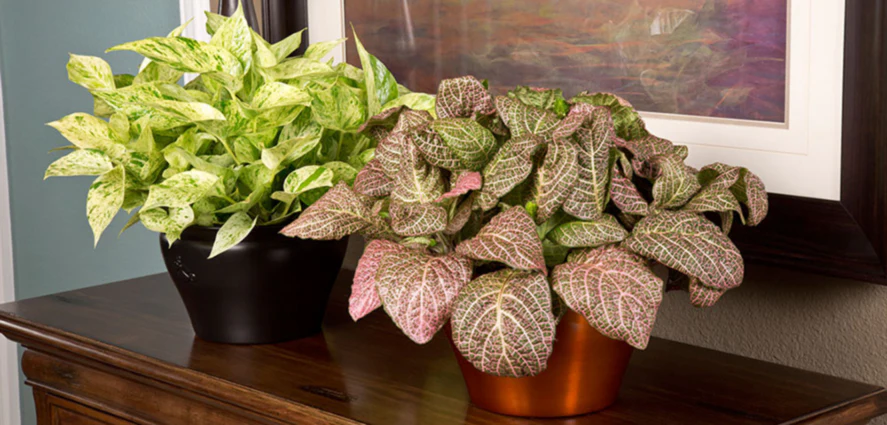
The Nerve Plant is a compact, vibrant houseplant known for its striking veined leaves, making it a visually appealing choice for Shower Plants That Actually Thrive in Humidity. Its love for warm, humid conditions makes it perfect for steamy bathrooms where it can flourish with minimal effort.
Why Nerve Plant Thrives in the Shower?
- Loves humidity – High moisture levels keep its delicate leaves from drying out.
- Prefers indirect light – Too much direct sun can scorch its colorful foliage.
- Vibrant and unique – Comes in shades of green, pink, red, and white, adding a bold pop of color.
Care Tips for Nerve Plant in the Shower:
- Keep the soil consistently moist, but avoid waterlogging.
- Place in bright, indirect light or under artificial grow lights.
- Mist occasionally if humidity levels drop below 50%.
- Trim regularly to encourage bushy, compact growth.
Related Topics:
6. Lucky Bamboo (Dracaena braunii)
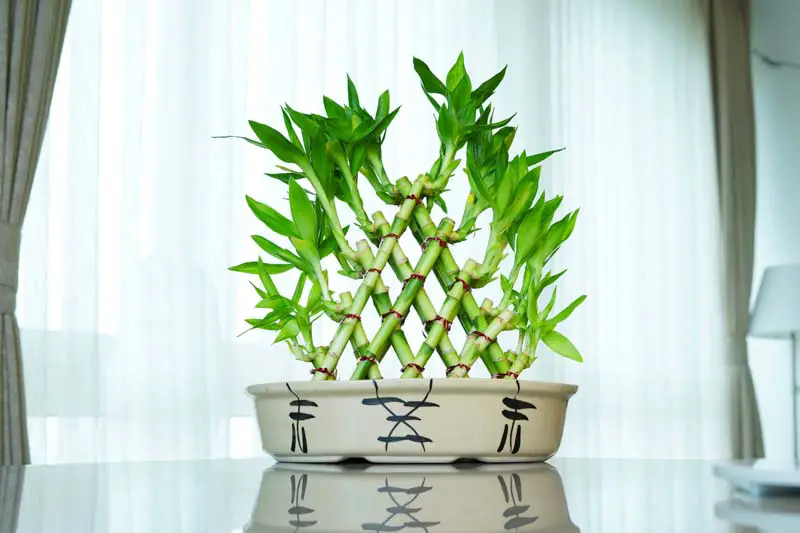
The Lucky Bamboo is a resilient and elegant plant that requires minimal care, making it a perfect choice for Shower Plants That Actually Thrive in Humidity. Its ability to grow in water alone and its tolerance for steamy conditions make it an ideal addition to a bathroom setting.
Why Lucky Bamboo Thrives in the Shower?
- Can grow in water alone – No soil needed, just a vase with clean water.
- Thrives in humid environments – The steam from showers mimics its natural tropical habitat.
- Low light tolerant – Can grow in low to moderate indirect light, making it ideal for bathrooms with limited sunlight.
Care Tips for Lucky Bamboo in the Shower:
- Keep the roots submerged in fresh, non-chlorinated water, changing it every 7-10 days.
- Place in indirect light—avoid direct sunlight to prevent leaf burn.
- Use a tall vase or decorative container to showcase its elegant stems.
- Rotate occasionally for even growth.
7. Prayer Plant (Maranta leuconeura)
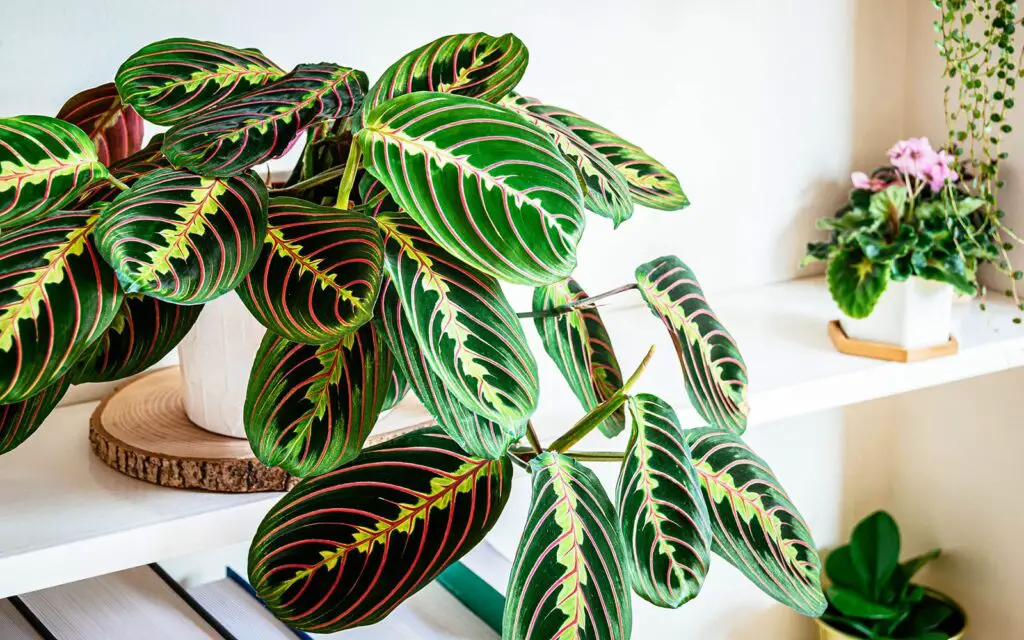
The Prayer Plant is a fascinating houseplant known for its unique ability to move its leaves in response to light changes, a phenomenon called nyctinasty. Its love for warm, humid environments makes it one of the best Shower Plants That Actually Thrive in Humidity, bringing both beauty and motion to your bathroom.
Why Prayer Plant Thrives in the Shower?
- Requires high humidity – Prevents its delicate leaves from drying out.
- Loves warm temperatures – Thrives in the consistent warmth of a bathroom.
- Foliage moves with light – Leaves fold upward at night and open during the day, adding dynamic interest.
Care Tips for Prayer Plant in the Shower:
- Keep the soil evenly moist, but avoid waterlogging.
- Place in bright, indirect light—too much direct sun can fade its colorful patterns.
- Mist occasionally if humidity levels drop below 60%.
- Wipe the leaves with a damp cloth to keep them dust-free and healthy.
8. Orchids (Phalaenopsis spp.)
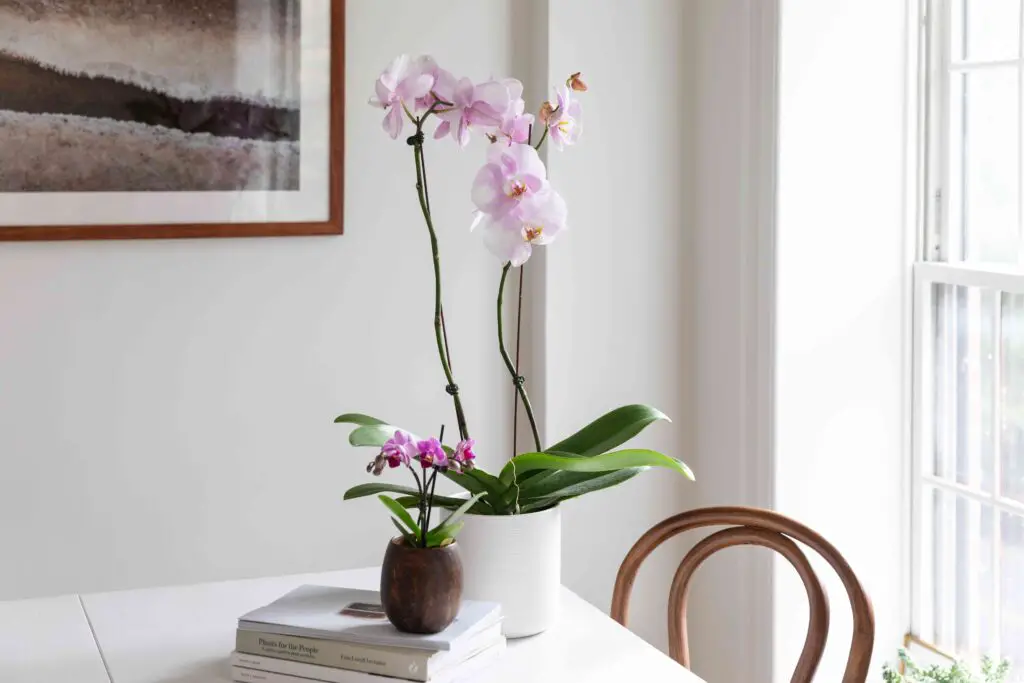
Phalaenopsis Orchids, also known as Moth Orchids, are among the most popular flowering houseplants, admired for their exotic blooms and graceful appearance. As one of the best Shower Plants That Actually Thrive in Humidity, these orchids naturally thrive in warm, moist environments, making them a perfect addition to a steamy bathroom.
Why Orchids Thrive in the Shower?
- Naturally suited for humid environments – Their tropical origins make them well-adapted to bathroom humidity.
- Requires good air circulation – Prevents root rot and promotes healthy growth.
- Blooms last for months – Adding a long-lasting touch of elegance to your space.
Care Tips for Orchids in the Shower:
- Place in bright, indirect light—bathroom windowsills are ideal.
- Use a well-draining orchid potting mix (bark-based, not soil).
- Water when the roots turn silvery-white, usually every 7-10 days.
- Ensure good airflow by placing near a vent or open window to prevent mold.
9. Spider Plant (Chlorophytum comosum)
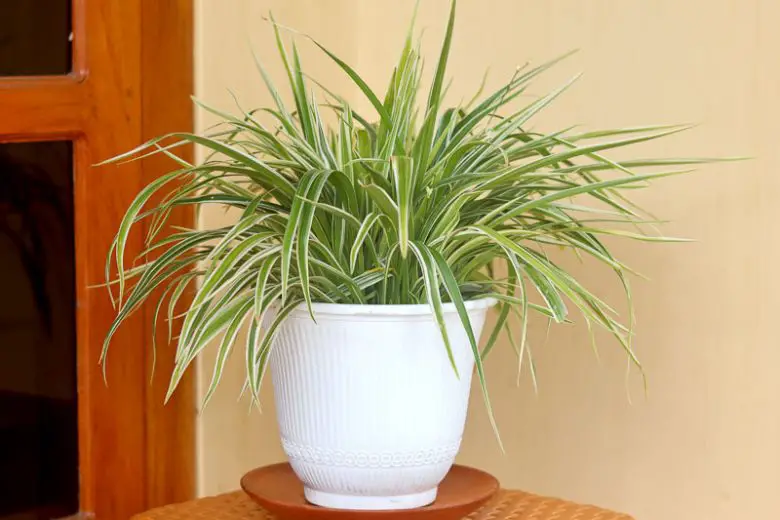
The Spider Plant is a classic, easy-care houseplant that adapts well to humid environments and helps purify the air. Its arching green-and-white striped leaves and baby plantlets (spiderettes) make it a beautiful and dynamic addition to any bathroom.
Why Spider Plant Thrives in the Shower?
- Tolerant of humidity and fluctuating moisture levels – Adapts well to both high and moderate humidity.
- Thrives in indirect light – Prefers bright, filtered light but can tolerate low light.
- Great air purifier – Removes toxins like formaldehyde and carbon monoxide from the air.
Care Tips for Spider Plant in the Shower:
- Water when the top inch of soil feels dry, avoiding overwatering.
- Place in bright, indirect light or under an artificial grow light.
- Trim brown leaf tips (often caused by fluoride in tap water—use filtered water if possible).
- Allow spiderettes to grow or propagate them in water for more plants!
10. Heartleaf Philodendron (Philodendron hederaceum)
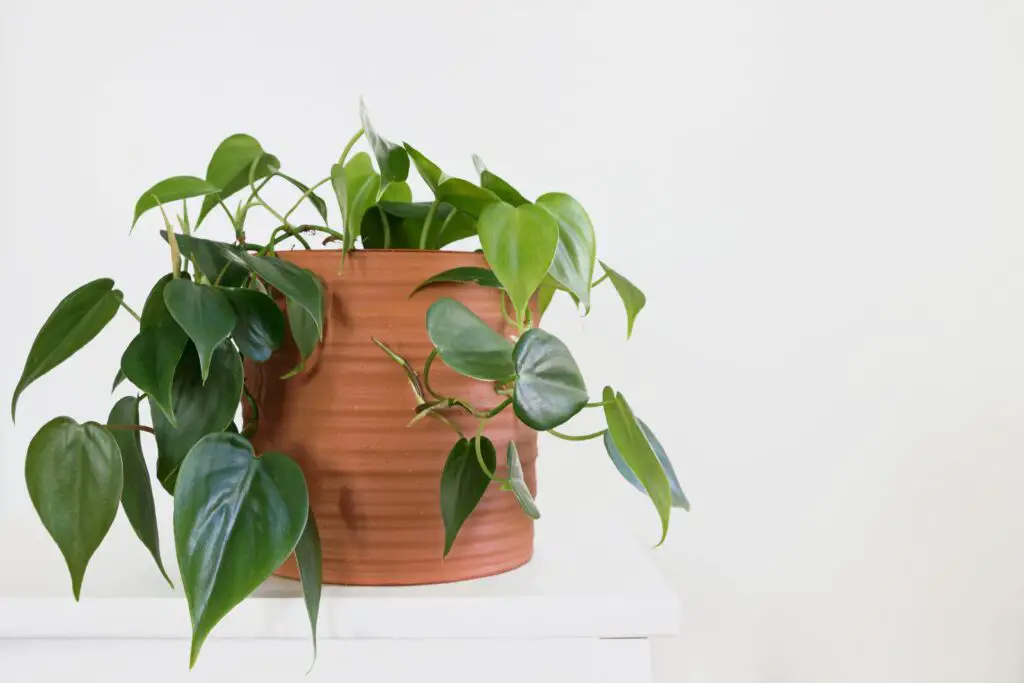
The Heartleaf Philodendron is a trailing beauty that brings effortless greenery to any bathroom. As one of the best Shower Plants That Actually Thrive in Humidity, it thrives in low light and high moisture, making it a perfect choice for bathrooms with limited sunlight. Its cascading vines add a lush, jungle-like feel, creating a spa-like atmosphere.
Why Heartleaf Philodendron Thrives in the Shower?
- Loves humidity – The warm, steamy air helps keep its foliage vibrant.
- Tolerates low light – Can grow well in dimly lit bathrooms, though bright indirect light encourages faster growth.
- Great trailing plant – Perfect for hanging baskets, shelves, or wall planters.
Care Tips for Heartleaf Philodendron in the Shower:
- Water when the top 1-2 inches of soil feel dry—avoid overwatering.
- Place in indirect light; it can tolerate low light but thrives with moderate brightness.
- Trim the vines occasionally to encourage full, bushy growth.
- Wipe the leaves with a damp cloth to remove dust and promote healthy growth.
11. ZZ Plant (Zamioculcas zamiifolia)

The ZZ Plant is one of the toughest houseplants, thriving in low light, high humidity, and minimal care. While it can tolerate dry conditions, it also adapts well to the steamy environment of a bathroom, making it an excellent choice for Shower Plants That Actually Thrive in Humidity.
Why ZZ Plant Thrives in the Shower?
- Handles humidity well – Adapts easily to moist environments without issues.
- Requires minimal watering – Stores water in its rhizomes, making it drought-tolerant.
- Excellent for low-light conditions – Perfect for bathrooms with little to no natural light.
Care Tips for ZZ Plant in the Shower:
- Water sparingly—allow the soil to dry out between waterings.
- Place in low to moderate indirect light; it can survive in dim spaces.
- Wipe the leaves occasionally to keep them glossy and dust-free.
- Use a well-draining potting mix to prevent root rot in humid conditions.
12. Bird’s Nest Fern (Asplenium nidus)
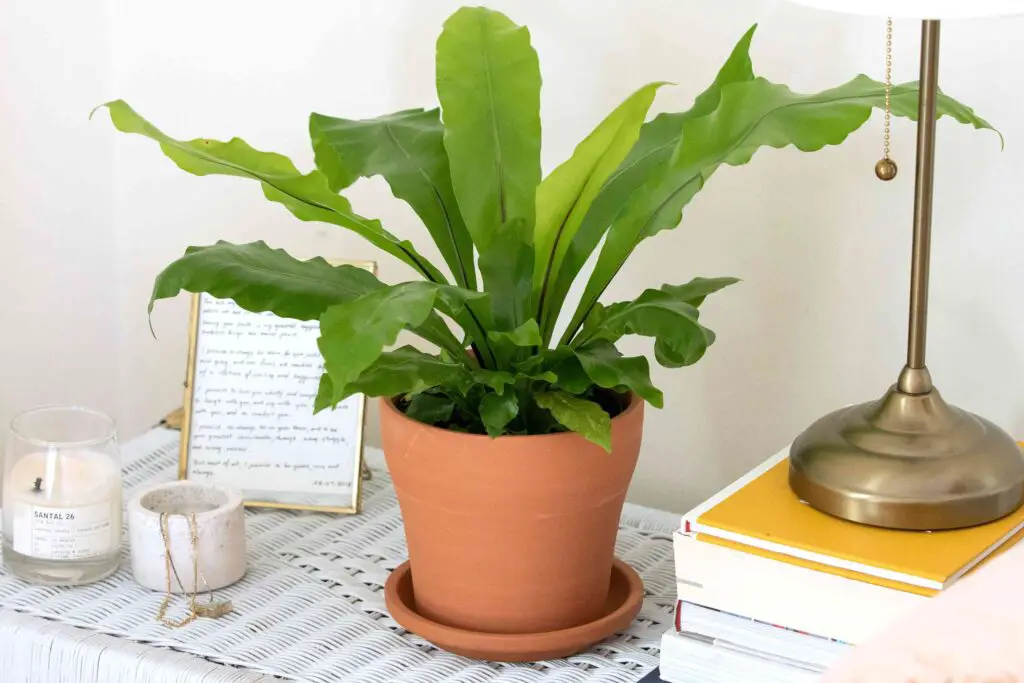
The Bird’s Nest Fern is a stunning, low-maintenance plant with wavy, bright green fronds that bring a tropical feel to any bathroom. As one of the best Shower Plants That Actually Thrive in Humidity, it loves warm, moist conditions and adapts well to indoor spaces with indirect light.
Why Bird’s Nest Fern Thrives in the Shower?
- Loves humid conditions – Naturally found in tropical rainforests, making bathrooms an ideal setting.
- Prefers indirect light – Thrives in medium to low light, avoiding harsh direct sunlight.
- Low-maintenance foliage – The broad, ruffled leaves add a lush, elegant look with minimal effort.
Care Tips for Bird’s Nest Fern in the Shower:
- Keep the soil consistently moist but not soggy.
- Place in bright, indirect light or a partially shaded spot.
- Mist occasionally if humidity levels drop below 50-60%.
- Avoid touching the central rosette (nest-like center) to prevent damage to new growth.
13. Calathea (Calathea spp.)
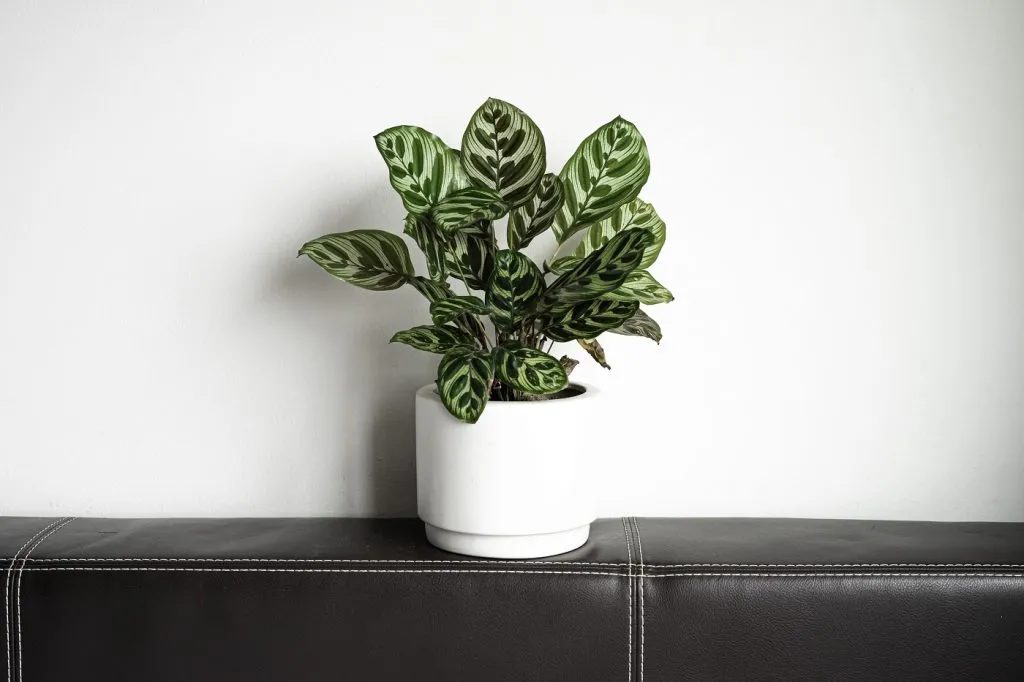
The Calathea is a show-stopping houseplant known for its striking patterned foliage and unique leaf movements. It thrives in warm, humid environments, making it one of the best Shower Plants That Actually Thrive in Humidity. Its vibrant leaves add a tropical, spa-like feel to any bathroom.
Why Calathea Thrives in the Shower?
- Loves high humidity – Prevents its delicate leaves from curling or browning.
- Prefers warm temperatures – Thrives in the consistent warmth of a bathroom.
- Beautiful patterned foliage – Comes in a variety of colors, including green, purple, pink, and white.
Care Tips for Calathea in the Shower:
- Keep the soil consistently moist, but avoid waterlogging.
- Place in bright, indirect light—too much direct sun can fade its vibrant patterns.
- Mist occasionally if humidity levels drop below 60%.
- Wipe the leaves gently to remove dust and enhance their natural shine.
14. Ivy (Hedera helix)
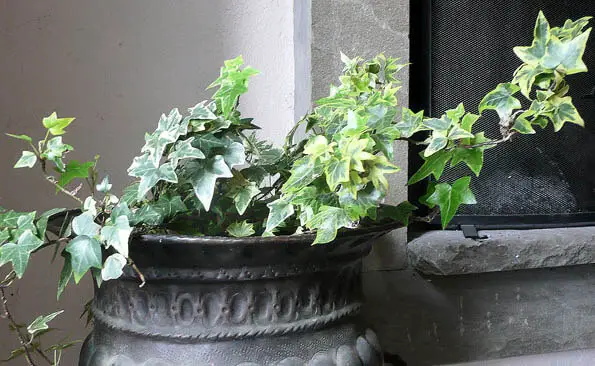
Ivy is a classic, fast-growing trailing plant that thrives in humid environments and adds a lush, cascading look to any bathroom. As one of the best Shower Plants That Actually Thrive in Humidity, it’s perfect for hanging baskets, wall planters, or high shelves, creating a green, spa-like ambiance.
Why Ivy Thrives in the Shower?
- Loves humidity – The steam from showers keeps its foliage vibrant and healthy.
- Thrives in indirect light – Prefers bright, filtered light but can tolerate low-light conditions.
- Perfect for hanging baskets – Its trailing vines create a beautiful cascading effect.
Care Tips for Ivy in the Shower:
- Keep the soil slightly moist, but avoid waterlogging.
- Provide bright, indirect light for best growth—too much shade can lead to leggy vines.
- Prune regularly to prevent overgrowth and encourage fuller foliage.
- Mist occasionally to keep leaves fresh and hydrated.
15. Air Plants (Tillandsia spp.)
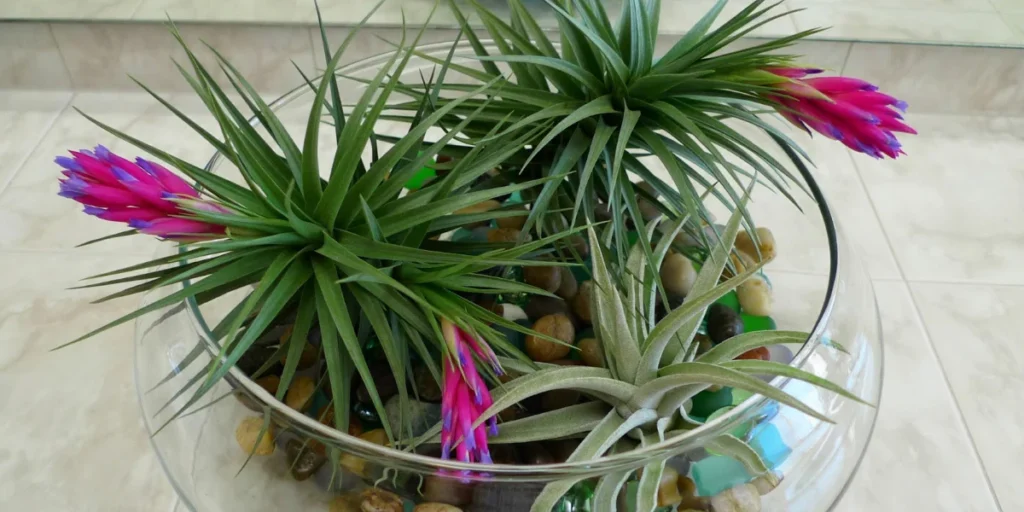
Air Plants are unique, low-maintenance plants that absorb moisture and nutrients directly from the air, making them one of the easiest Shower Plants That Actually Thrive in Humidity. Since they don’t require soil, they can be displayed in creative ways, such as mounted on driftwood, placed in glass terrariums, or hung in macramé holders.
Why Air Plants Thrive in the Shower?
- Absorb moisture from the air – The high humidity from showers keeps them hydrated.
- Require no soil – Can be displayed in unique and space-saving ways.
- Perfect for small bathrooms – Their compact size makes them ideal for tight spaces.
Care Tips for Air Plants in the Shower:
- Place in bright, indirect light—bathroom windowsills or under artificial light work well.
- Mist once or twice a week if your shower’s humidity isn’t enough.
- Soak in room-temperature water for 20-30 minutes every 1-2 weeks for extra hydration.
- Ensure good air circulation to prevent rot—avoid placing them in constantly wet spots.
How to Care for Shower Plants That Actually Thrive in Humidity:
Keeping Shower Plants That Actually Thrive in Humidity healthy requires proper placement, watering, ventilation, and occasional feeding. Here’s how to ensure your bathroom plants stay lush and vibrant.
1. Lighting Needs – Choosing the Right Location in the Bathroom:
- Most shower plants thrive in bright, indirect light—place them near a window or skylight.
- If your bathroom has low light, choose plants like ZZ Plant, Lucky Bamboo, or Heartleaf Philodendron that can tolerate dim spaces.
- Consider LED grow lights for windowless bathrooms.
2. Watering Requirements – Adjusting Based on Plant Type:
- Humidity-loving plants (Ferns, Orchids, Calatheas) need consistently moist soil but not soggy conditions.
- Drought-tolerant plants (ZZ Plant, Air Plants, Bromeliads) require less frequent watering to avoid root rot.
- Use a well-draining potting mix for soil-based plants to prevent excess moisture buildup.
3. Preventing Mold and Mildew – Ensuring Proper Ventilation:
- Keep the bathroom well-ventilated by using an exhaust fan or opening windows after showers.
- Wipe leaves regularly to remove moisture buildup that could lead to mold.
- Avoid placing plants in stagnant, damp corners where air circulation is poor.
4. Fertilization Tips – Providing Nutrients for Lush, Healthy Growth:
- Use a diluted liquid fertilizer once a month during the growing season (spring/summer).
- Epiphytic plants (Orchids, Air Plants, Bromeliads) benefit from foliar feeding—mist with a nutrient solution.
- Reduce feeding in winter, as most plants enter a dormant phase.
Adding Shower Plants That Actually Thrive in Humidity to your bathroom is a simple and effective way to create a lush, spa-like retreat while improving air quality and reducing stress. These plants naturally thrive in moisture-rich environments, making them a perfect addition to your daily routine.
By incorporating humidity-loving plants, you can enjoy natural air purification, increased oxygen levels, and a visually refreshing atmosphere—all without the hassle of frequent watering. Whether you have a bright, airy bathroom or a dimly lit space, there’s a shower plant suited for your environment.
Getting Started with Shower Plants:
- Start with easy-care plants like ZZ Plant, Lucky Bamboo, or Heartleaf Philodendron.
- Experiment with placement—try hanging plants like Ivy and Boston Fern or mounting Staghorn Ferns for a unique touch.
- Incorporate a mix of textures and colors—combine the bold leaves of Calatheas, the trailing vines of Pothos, and the structured beauty of Orchids.
- Ensure proper care—monitor light, humidity levels, and airflow to keep plants thriving.
With the right selection, your bathroom can become a vibrant, living space that promotes relaxation and well-being. So why not start today? Pick a plant, place it in your shower, and enjoy the beauty of nature every time you step in!
FAQs:
1. Can all houseplants survive in a bathroom environment?
No, not all houseplants can thrive in a bathroom. Many plants struggle with excessive moisture, low light, and poor air circulation. However, plants like Ferns, Orchids, Bromeliads, and Philodendrons are well-suited for high-humidity environments and can flourish in the shower.
2. How do I prevent mold or mildew from growing on my shower plants?
To prevent mold and mildew:
- Ensure good air circulation by using an exhaust fan or opening windows.
- Wipe leaves regularly to remove moisture buildup.
- Avoid overwatering, especially for soil-based plants.
- Use a well-draining pot to prevent standing water at the roots.
3. Do shower plants need fertilizer, and if so, how often?
Yes, shower plants benefit from occasional feeding, but they require less fertilizer than plants in drier environments. Use a diluted liquid fertilizer once a month during the growing season (spring and summer), and reduce feeding in the fall and winter when growth slows down. Epiphytic plants like Orchids and Air Plants benefit from a light misting of nutrient solution instead of direct soil feeding.

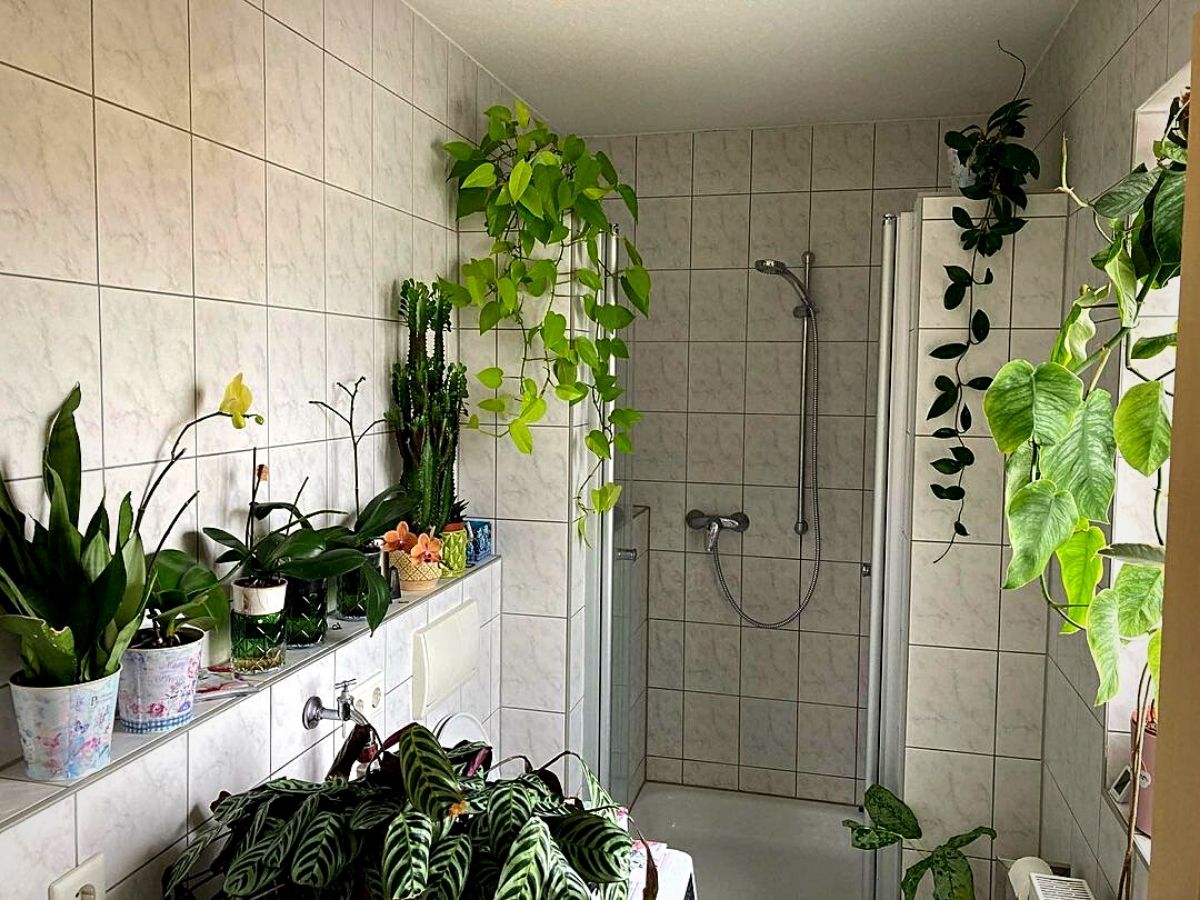
2 thoughts on “15 Shower Plants That Actually Thrive In Humidity: Love the Steam!”